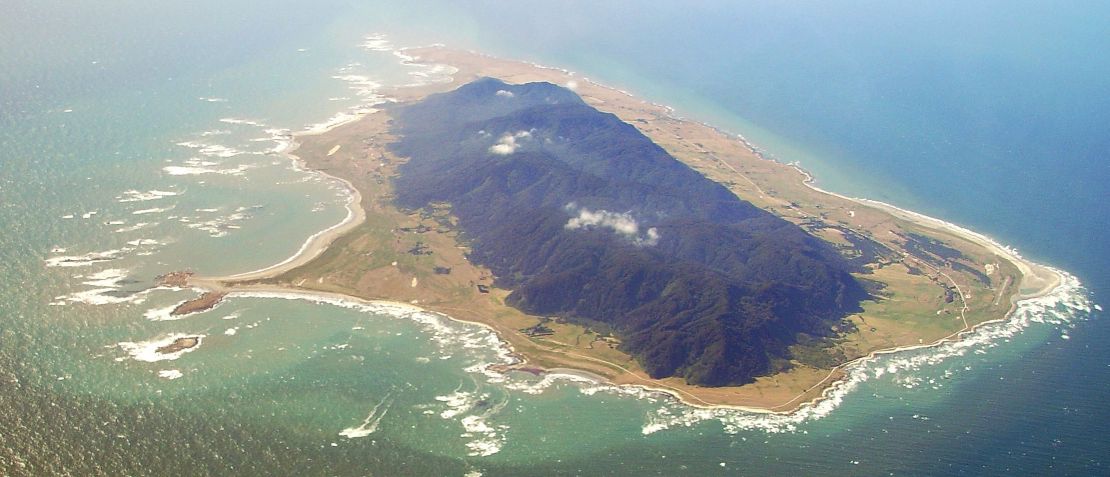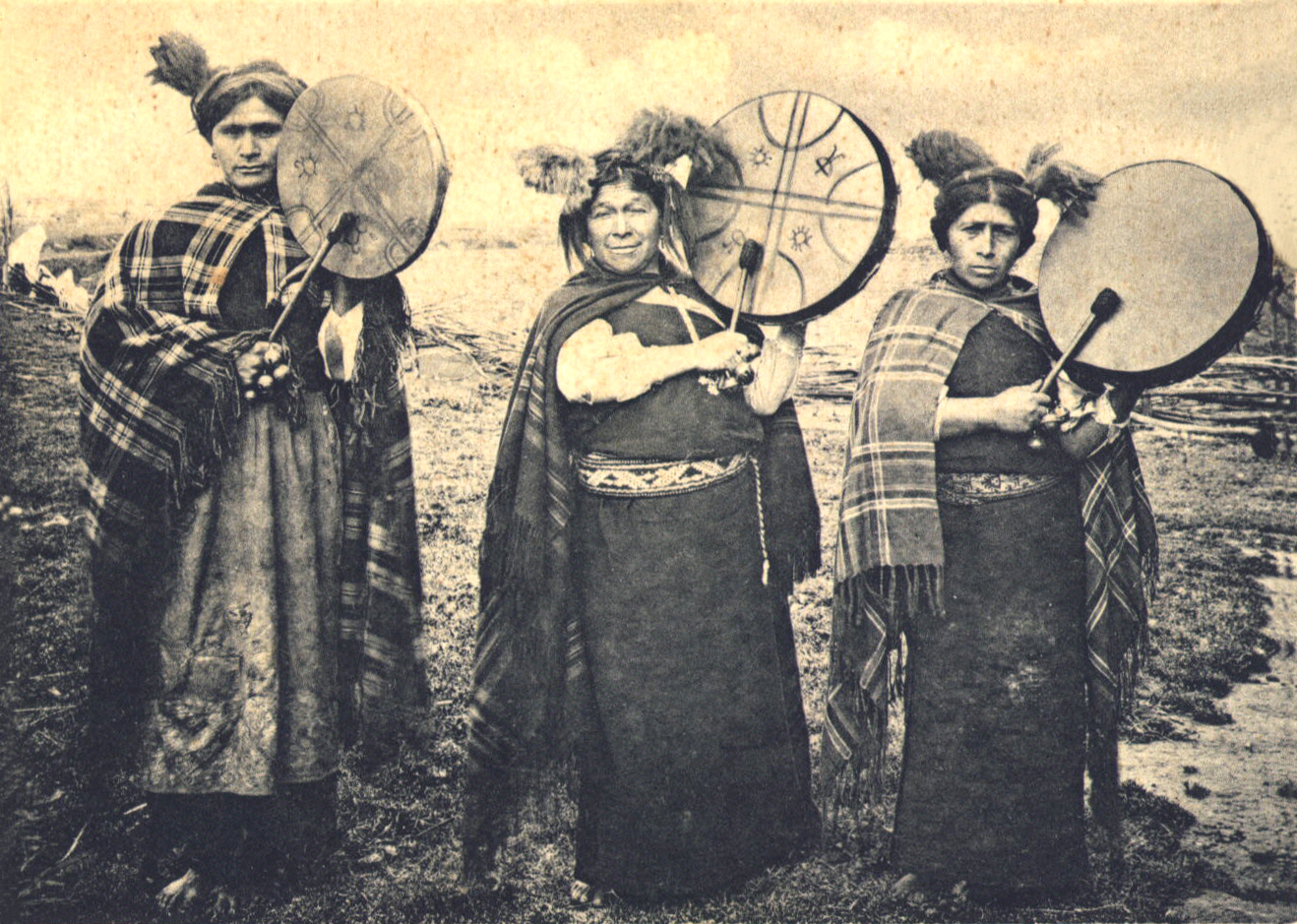|
Mapuche Silverwork
Mapuche silverwork is one of the best known aspects of Mapuche material culture.Painecura 2011, p. 15. The adornments have been subject to changes in fashion but some designs have resisted change. History Prior tradition of gold adornments Mapuche people had a gold-related cultural tradition that predates the Inca invasion. In the 16th century, at the time of the Spanish conquest of Chile, Mapuches are reported by various chroniclers to have used gold adornments. According to Zavala and co-workers (2021) the widespread gold-related toponyms in Mapuche lands and early Spanish reports of gold objects, plus the easiness for the Spanish to find gold mines suggests that gold mining did occur in Pre-Hispanic Chile south of Itata River, well beyond the borders of the Inca Empire. Historian José Toribio Medina posits that most of the Mapuche gold adornments were despoiled by the Spanish during the conquest. Local folklore says much gold was also hidden from the Spanish and gold mines c ... [...More Info...] [...Related Items...] OR: [Wikipedia] [Google] [Baidu] |
Costume Of A Cacique´s Daughter, Ornamentsn Of Silver Made By Indians
Costume is the distinctive style of dress or cosmetic of an individual or group that reflects class, gender, profession, ethnicity, nationality, activity or epoch. In short costume is a cultural visual of the people. The term also was traditionally used to describe typical appropriate clothing for certain activities, such as riding costume, swimming costume, dance costume, and evening costume. Appropriate and acceptable costume is subject to changes in fashion and local cultural norms. This general usage has gradually been replaced by the terms "dress", "attire", "robes" or "wear" and usage of "costume" has become more limited to unusual or out-of-date clothing and to attire intended to evoke a change in identity, such as theatrical, Halloween, and mascot costumes. Before the advent of ready-to-wear apparel, clothing was made by hand. When made for commercial sale it was made, as late as the beginning of the 20th century, by "costumiers", often women who ran businesses that ... [...More Info...] [...Related Items...] OR: [Wikipedia] [Google] [Baidu] |
Mapudungun
Mapuche (, Mapuche & Spanish: , or Mapudungun; from ' 'land' and ' 'speak, speech') is an Araucanian language related to Huilliche spoken in south-central Chile and west-central Argentina by the Mapuche people (from ''mapu'' 'land' and ''che'' 'people'). It is also spelled Mapuzugun and Mapudungu. It was formerly known as Araucanian, the name given to the Mapuche by the Spaniards; the Mapuche avoid it as a remnant of Spanish colonialism. Mapudungun is not an official language of the countries Chile and Argentina, receiving virtually no government support throughout its history. However, since 2013, Mapuche, along with Spanish, has been granted the status of an official language by the local government of Galvarino, one of the many Communes of Chile. It is not used as a language of instruction in either country's educational system despite the Chilean government's commitment to provide full access to education in Mapuche areas in southern Chile. There is an ongoing political ... [...More Info...] [...Related Items...] OR: [Wikipedia] [Google] [Baidu] |
Mapuche Culture
The Mapuche ( (Mapuche & Spanish: )) are a group of indigenous inhabitants of south-central Chile and southwestern Argentina, including parts of Patagonia. The collective term refers to a wide-ranging ethnicity composed of various groups who shared a common social, religious, and economic structure, as well as a common linguistic heritage as Mapudungun speakers. Their habitat once extended from Aconcagua Valley to Chiloé Archipelago and later spread eastward to Puelmapu, a land comprising part of the Argentine pampa and Patagonia. Today the collective group makes up over 80% of the indigenous peoples in Chile, and about 9% of the total Chilean population. The Mapuche are particularly concentrated in the Araucanía region. Many have migrated from rural areas to the cities of Santiago and Buenos Aires for economic opportunities. The Mapuche traditional economy is based on agriculture; their traditional social organization consists of extended families, under the direction of a ... [...More Info...] [...Related Items...] OR: [Wikipedia] [Google] [Baidu] |
Mapuche History
As an archaeological culture, the Mapuche people of southern Chile and Argentina have a long history which dates back to 600–500 BC. The Mapuche society underwent great transformations after Spanish contact in the mid–16th century. These changes included the adoption of Old World crops and animals and the onset of a rich Spanish–Mapuche trade in La Frontera and Valdivia. Despite these contacts Mapuche were never completely subjugated by the Spanish Empire. Between the 18th and 19th century Mapuche culture and people spread eastwards into the Pampas and the Patagonian plains. This vast new territory allowed Mapuche groups to control a substantial part of the salt and cattle trade in the Southern Cone. Between 1861 and 1883 the Republic of Chile conducted a series of campaigns that ended Mapuche independence causing the death of thousands of Mapuche through combat, pillaging, starvation and smallpox epidemics. Argentina conducted similar campaigns on the eastern side of the ... [...More Info...] [...Related Items...] OR: [Wikipedia] [Google] [Baidu] |
National Museum Of The American Indian
The National Museum of the American Indian is a museum in the United States devoted to the culture of the indigenous peoples of the Americas. It is part of the Smithsonian Institution group of museums and research centers. The museum has three facilities. The National Museum of the American Indian on the National Mall in Washington, D.C., opened on September 21, 2004, on Fourth Street and Independence Avenue, Southwest. The George Gustav Heye Center, a permanent museum, is located at the Alexander Hamilton U.S. Custom House in New York City. The Cultural Resources Center, a research and collections facility, is located in Suitland, Maryland. The foundations for the present collections were first assembled in the former Museum of the American Indian in New York City, which was established in 1916, and which became part of the Smithsonian in 1989. On January 20, 2022, the museum announced Cynthia Chavez Lamar as its new director. Her first day in this position was February 14, ... [...More Info...] [...Related Items...] OR: [Wikipedia] [Google] [Baidu] |
LOM Ediciones
LOM Ediciones («Lom», means in yaghan language: «sun») is a Chilean press based in Santiago. It was established in 1990. Several Chileans and Latin American writers published in this press, like Pedro Lemebel, Tomas Moulian and Enrique Lihn Enrique Lihn Carrasco (3 September 1929 – 10 July 1988) was a Chilean poet, playwright, and novelist. The son of Enrique Lihn Doll and María Carrasco Délano, he married Ivette Mingram (1932–2008). They had one daughter, the actress Andr .... External links * References {{reflist Book publishing companies of Chile Book publishing companies based in Santiago Publishing companies established in 1990 Chilean companies established in 1990 ... [...More Info...] [...Related Items...] OR: [Wikipedia] [Google] [Baidu] |
La Frontera, Chile
La Frontera is a name used in Chile to refer to the region around the Bío Bío River, or to the whole area between there and the Toltén River. The use of this latter definition is largely coterminous with the Araucanía (historic region), historical usage of Araucanía. The term was coined during the period when the region was the frontier of the Captaincy General of Chile, then a part of the Spanish Empire and later the Republic of Chile, with the Mapuche people inhabiting the Araucanía following their Arauco War#Third Great Mapuche Rebellion (1598), revolt in 1598. Subsequently, the Spanish Empire established a system of forts between the Bío Bío River and the Itata River, as well as some within the Araucanía. This system continued through the 18th century and into the 19th century. Forts and settlements of La Frontera The first fortress rebuilt following the 1599 destruction of the forts in Catirai and its city Santa Cruz de Coya, the cities of Valdivia, Chile, Santa Mar� ... [...More Info...] [...Related Items...] OR: [Wikipedia] [Google] [Baidu] |
Smallpox
Smallpox was an infectious disease caused by variola virus (often called smallpox virus) which belongs to the genus Orthopoxvirus. The last naturally occurring case was diagnosed in October 1977, and the World Health Organization (WHO) certified the global eradication of the disease in 1980, making it the only human disease to be eradicated. The initial symptoms of the disease included fever and vomiting. This was followed by formation of ulcers in the mouth and a skin rash. Over a number of days, the skin rash turned into the characteristic fluid-filled blisters with a dent in the center. The bumps then scabbed over and fell off, leaving scars. The disease was spread between people or via contaminated objects. Prevention was achieved mainly through the smallpox vaccine. Once the disease had developed, certain antiviral medication may have helped. The risk of death was about 30%, with higher rates among babies. Often, those who survived had extensive scarring of their ... [...More Info...] [...Related Items...] OR: [Wikipedia] [Google] [Baidu] |
Occupation Of Araucanía
The Occupation of Araucanía or Pacification of Araucanía (1861–1883) was a series of military campaigns, agreements and penetrations by the Chilean army and settlers into Mapuche territory which led to the incorporation of Araucanía into Chilean national territory. ''Pacification of Araucanía'' was the expression used by the Chilean authorities for this process. The conflict was concurrent with Argentine campaigns against the Mapuche (1878–1885) and Chile's wars with Spain (1865–1866) and with Peru and Bolivia (1879–1883). The Mapuche people had a history of resistance to Spanish conquest with the area known as Araucanía remaining ''de facto'' independent through the colonial era. Following Chilean Independence War from Spain, relations between the nascent republic and the Mapuches of Araucanía remained mostly amicable. However economical and geopolitical reasons together with increasingly negative attitudes towards the Mapuche made Chilean authorities dec ... [...More Info...] [...Related Items...] OR: [Wikipedia] [Google] [Baidu] |
Fashion
Fashion is a form of self-expression and autonomy at a particular period and place and in a specific context, of clothing, footwear, lifestyle, accessories, makeup, hairstyle, and body posture. The term implies a look defined by the fashion industry as that which is ''trending''. Everything that is considered ''fashion'' is available and popularized by the fashion system (industry and media). Given the rise in mass production of commodities and clothing at lower prices and global reach, sustainability has become an urgent issue among politicians, brands, and consumers. Definitions The French word , meaning "fashion", dates as far back as 1482, while the English word denoting something "in style" dates only to the 16th century. Other words exist related to concepts of style and appeal that precede ''mode''. In the 12th and 13th century Old French the concept of elegance begins to appear in the context of aristocratic preferences to enhance beauty and display refinement, an ... [...More Info...] [...Related Items...] OR: [Wikipedia] [Google] [Baidu] |
Machi (shaman)
A machi is a traditional healer and religious leader in the Mapuche culture of Chile and Argentina. Machis play significant roles in Mapuche religion. In contemporary Mapuche culture, women are more commonly machis than men but it is not a rule. Description As a religious authority, a machi leads healing ceremonies, called Machitun. During the machitun, the machi communicates with the spirit world. Machies also serve as advisors, and oracles for their community. In the past, they advised on peace and warfare. The term is sometimes interchangeable with the word ''kalku'', however, ''kalku'' has a usually evil connotation whereas ''machi'' is usually considered good; this, however, is not always true since in common use the terms may be interchanged. The Mapuches live in southern South America mostly in central Chile ( Araucanía and Los Lagos) and the adjacent areas of Argentina. To become a machi, a Mapuche person has to demonstrate character, willpower, and courage, bec ... [...More Info...] [...Related Items...] OR: [Wikipedia] [Google] [Baidu] |
Lonko
A lonko or lonco (from Mapudungun ''longko'', literally "head"), is a chief of several Mapuche communities. These were often Ulmen (Mapuche), ulmen, the wealthier men in the lof. In wartime, lonkos of the various local rehue or the larger aillarehue would gather in a koyag or parliament and would elect a toqui to lead the warriors in battle. ''Lonco'' sometimes forms part of geographical names such as the city of Loncoche (English: "head of an important person"). References Mapuche Lonkos, History of Chile Indigenous leaders of the Americas, * Titles of national or ethnic leadership Mapuche words and phrases {{Chile-stub ... [...More Info...] [...Related Items...] OR: [Wikipedia] [Google] [Baidu] |







